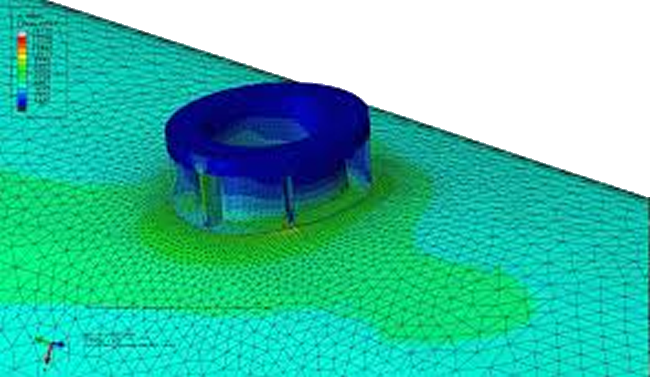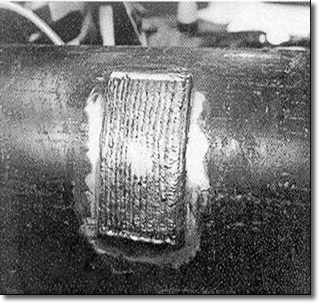New ASME PCC-1 Qualification Procedures for Flange Joint Assemblers
For quite some time now, Section VIII Division 1 of the ASME Boiler & Pressure Vessel Code has included the following provision in Appendix 2-15:
2-15 QUALIFICATION OF ASSEMBLY PROCEDURES AND ASSEMBLERS.
It is recommended that flange joints designed to this Appendix be assembled by qualified procedures and by qualified assemblers. ASME PCC-1 may be used as a guide.
The “qualified procedures” reference is to Appendix A of PCC-1-2010 entitled “Notes Regarding Qualifying Flanged Joint Assemblers” and these notes cover slightly less than ½ page, with an Introductory Note stating that a proposed revision to this Appendix was under consideration by the ASME Pressure Technology Post Construction Committee. Well this “consideration” has come to fruition so that the updated Appendix A in the 2013 Edition of PCC-1 will include a replacement 20+ page Appendix A entitled:
TRAINING AND QUALIFICATION OF
BOLTED JOINT ASSEMBLY PERSONNEL.
QUALIFICATION COMPONENTS
There are three components outlined in the new Appendix A for Qualification of a Bolting Specialist:
• Training – a training course that meets the guidance provided in Appendix A, including examination on the theory.
• Practical – successful completion of a combined practical examination and practical demonstration
• Experience – a requirement of a certain level of field experience
TRAINING OF FUNDAMENTALS
Training in the fundamentals of bolted joint operation and assembly includes instruction in over 20 areas, including:
• General personal joint assembly equipment requirements
• The principles of bolt elongation
• Bolt load and gasket stress
• Functionality of gasket and seal
• Gasket types and their limitations
• Bolt types and their limitations
• Identification of correct joint components
• Manual Torque joint tightening
• Importance of using the specified lubricant
• Techniques used for load control
• Calibration and maintenance of bolt tightening equipment
• Inspection and reporting defects or faults
• Procedure for preparing a joint for closure
• Gasket handling, preparation and installation
• Sources of information on joint assembly
• Safe joint disassembly and assembly
• Joint assembly procedures
• Ensuring correct use of additional joint components
• Importance of procedures, qualification and records
• Joint Disassembly
PRACTICAL DEMONSTRATION
In addition to training on the theory of joint operation and assembly, different practical demonstrations are required; each designed to clarify one of the following important aspects:
• Importance of bolt assembly pattern
• Importance of bolt assembly pattern versus correct gasket selection
• Importance of joint alignment prior to assembly
• Importance of gasket placement
• Influence of bolt & nut lubrication
• Reaction of different types of gaskets to standard tightening procedures
PRACTICAL EXAMINATION & FIELD EXPERIENCE
To complete the training aspect of the qualification program, the candidate will be required to take a practical examination that consists of assembling at least 2 joints while being graded by a Qualified Bolting Specialist Instructor. In addition, there are supplementary training requirements for the optional endorsements to the qualification that focus specifically on aspects that are covered by the field of endorsement (such as the operation of hydraulic equipment for powered equipment endorsement).
Since the practice of assembling a joint in the field provides a significant source of learning for the individual, Appendix A also outlines a minimum amount of experience of bolted joint assembly in the field that is required before an individual can be considered a Qualified Bolting Specialist. The requirement is for 6 months of full time experience, with part time experience being pro-rated depending on the amount of actual assembly experience that the individual is receiving in their day-to-day activities.
INTENDED IMPLEMENTATION
The intent of Appendix A is to provide a sound basis for the training, assessment and qualification of bolted joint assemblers, but it is fully recognized that qualifications of this level are not required for every individual involved in the assembly of every joint. In fact, it is common for joints to be assembled using teams of individuals with different skill sets, and it is fully expected that in the best case scenario only one or two individuals may actually be Qualified Bolting Specialists on any given team. It is felt that, through the process of ensuring this potential step change improvement in the knowledge of the team, as a whole, that the intent of the Appendix will have been achieved.
HOW PROGRAM WILL BE ADMINISTERED
In order to achieve the desired goal, a system of independent third-party verification was developed, which was designed to demonstrate that the qualification programs are in accordance with Appendix A. This approach is similar to an accreditation program, with the exception that there is no central body administering the accreditation. A While the selected approach is perhaps not as good as a true accreditation program in achieving portability, the advantage is that it does allow industry to customize and find a system that will be both practical and efficient for providing the desired end result of assembler qualification. The other advantage is that the lack of a centralized body means that the program growth and implementation is not limited by the capabilities or resource of the centralized body.
FINAL THOUGHT
Our final thought on implementation is that end-users should be cognizant of the difference between assembler qualification and assembler competency. The Appendix A program has been formulated to try to maximize the likelihood that a qualified assembler will also be a competent assembler by the inclusion of experience and practical examinations/demonstrations. However, in the end it is only by witnessing the individual at work over an extended period of time that competency can truly be judged, such as the system for on-going inspection and testing of welder performance which is required to maintain their qualifications. Therefore, the onus for determining the competency of an assembler will remain the responsibility of their employer, even if they may hold a joint assembler qualification.
[readon2 url=”index.php?option=com_rsform&view=rsform&formId=4&Itemid=620″]Click to Request Info[/readon2]





Clyde, do you have any thoughts on how the make-up of a flanged joint design could be qualified? Perhaps by a sample make-up of a fastener in the same configuration and conditions, with the elongation achieved measured by an accurate method in order to establish % of yield achieved? Best regards, Simon.
One way to remove variance from the make-up process is by sample testing of fastener extension using production processes, people and equipment as much as possible.
Effectively Qualification of Flanged Connection Make-up System – a combination of QA, training and testing to ensure the design, materials, methods and operator are consistent (this would be comparable to both weld process and welder qualification).
Best regards,
Simon.